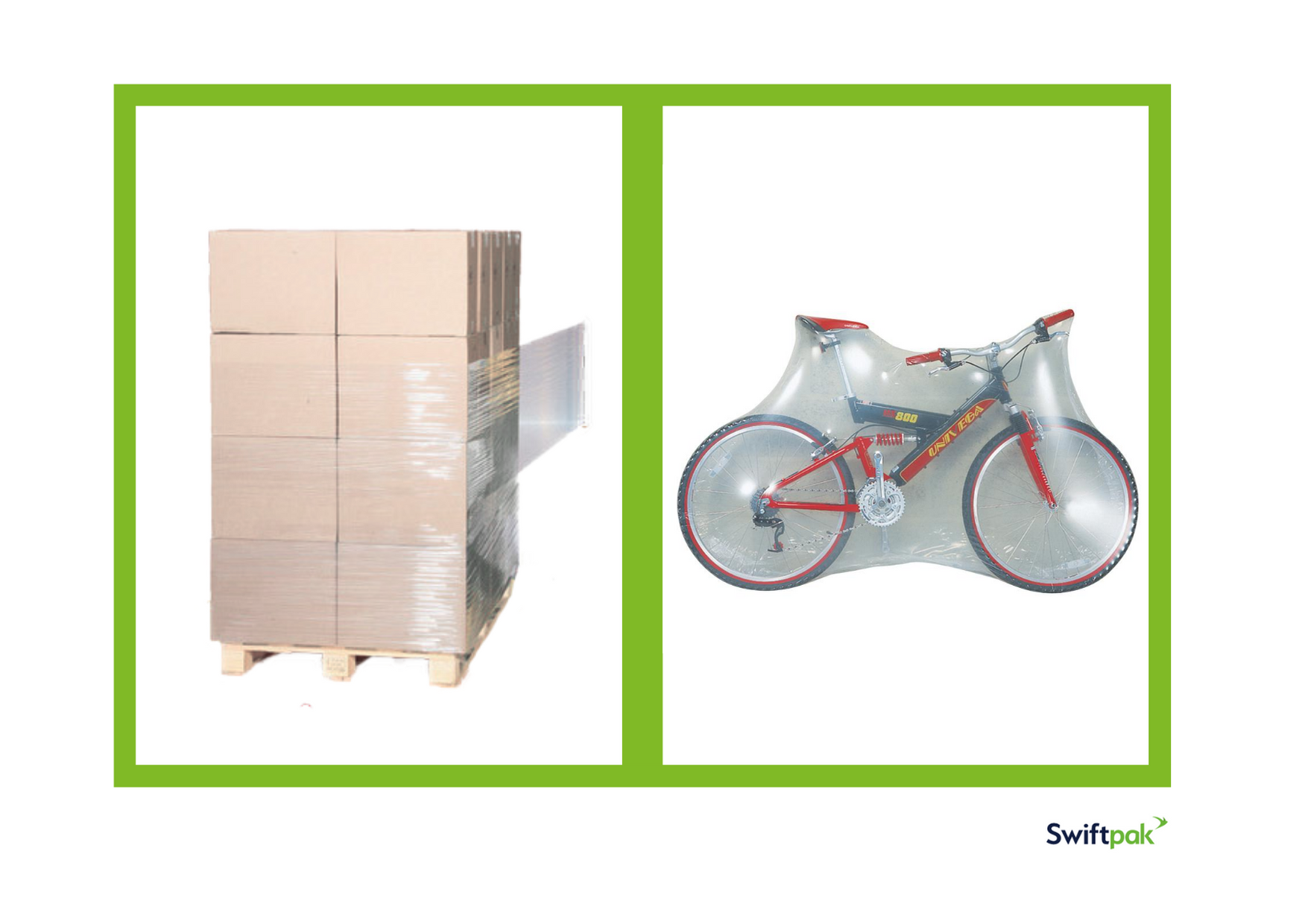When it comes to the protection of goods or combining of items on a pallet, these two items have very similar names. But the similarities stop there. Below we will go through the details and outline the differences of the two.
Stretch Wrapping
Stretch wrapping is simply wrapping stretchable plastic film around a load of products. This film is capable of achieving many different results depending on the users need, and we explain this in our guide to types of stretch wrap. In most cases, stretch wrap is used for transportation or storage purposes.
There are many advantages to using stretch wrap, including:
· Protection against dust and moisture – securing your loads with stretch wrap will protect them from environmental elements. UVI stretch wrap will protect your loads from UV rays when stored outside.
· Increased load stability – stretch wrap help create a more stable load, reducing chances of damage during transit.
· Increased stack height – used in conjunction with edge guards, stretch wrap helps to create a higher pallet load, maximising your cube space.
Stretch wrap can be applied in three ways. Manually, semi-automatically, and automatically. Wrapping your loads manually can be time consuming and physically demanding, sometimes causing repetitive strain injuries. That’s why at Swiftpak we recommend semi-automatic or automatic machines.

Shrink Wrapping
Shrink wrapping is when heat is applied to the covered object, and the film shrinks tightly over the item it is covering. This ensures the wrap covers every crevice of the product for maximum protection, and is used in many situations. From helicopters, to children’s toys, to candles, shrink wrap can be used to effectively wrap almost anything. The benefits don’t stop there. Shrink wrap is also environmental friendly, as it is 100% recyclable and has an LDPE (low density polyethylene) rating of 4. The glossy finish of shrink wrap is an absolute bonus too, showing off the items encased ensuring easy identification. Furthermore, shrink wrapping products means that they are completely sealed, making it an extremely safe and effective way to ship food and drink products.
The main method used when applying shrink wrap is to use a heat gun, this heats the film and makes the particles of film shift closer together, enclosing the item/s as it goes.
To Conclude; Stretch Wrap Vs Shrink Wrap
In conclusion, both stretch and shrink wrapping effectively provide a protective film when shipping goods, however stretch film wraps and protects industrial pallets, whilst shrink film is best used for consumer goods.